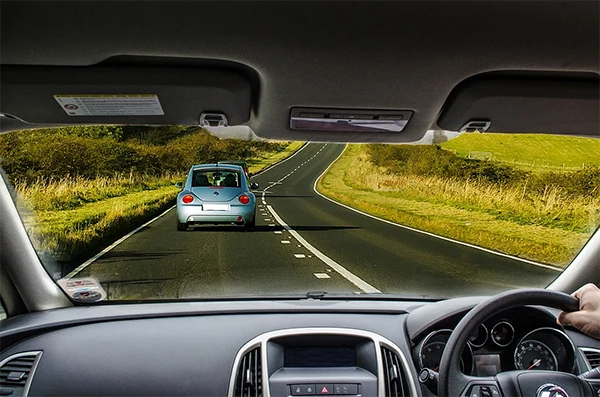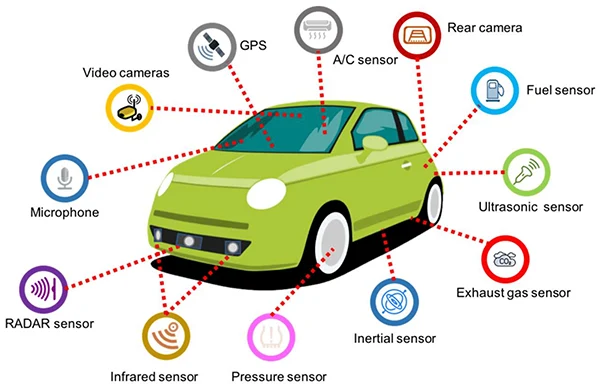
With the rise in rash driving, road safety has become a major concern these days. To address this issue, various automakers have introduced smart devices to improve passenger safety.
These smart on-road devices are designed to prevent road accidents by improving driving performance and route network sustainability. Plus, the IoT in vehicles allows drivers to access real-time information and choose the best possible route.
Thus, today we are going to explore these smart road technologies and explore how the intersection of smart devices and road safety helps prevent road crashes and situations where you have to handle your semi truck accident claim.
The intersection where smart devices and road safety meet is something that has given rise to various technologies, like sensors, camera-based technology, etc. Thus, we are going to take a look at these Smart on-road Technologies to learn how they can eliminate accidents and enhance your legal knowledge. So, let’s dive straight in!
A vehicle sensor, or a car sensor, is an electronic device that monitors various aspects of devices, like the temperature, coolant system, engine, vehicle speed, etc., and sends it to the driver or the ECU (Electronic Control Unit).
In modern autonomous vehicles, automotive vehicle sensors like cameras, LiDAR, radar, and 3D Time of Light LiDAR, play a huge part, as they provide crucial information to the vehicle’s control system, as shown in the image below.

It uses various sensors to prevent road crashes, and the common sensor technology includes:
Integrating these sensors into your vehicles can ensure road safety and help you avoid traffic jams.
With the latest trends in AI integration, cameras have become more compact and have higher resolutions. To top all these aspects, it has even become cloud-connected, which notifies you if any emergency arises.
Various traffic management systems have employed these cloud-connected advanced cameras to detect traffic violations or any activities that might put road safety at risk.
These vision technologies are commonly used in the following aspects:
You can apply the above-mentioned usage cases in real life to achieve efficiency while driving.
Smart roads use traffic management systems, smart infrastructure, computing solutions, and the Internet of Things to minimize congestion and improve roadway safety. It helps cities and transportation authorities gather traffic data and analyze it to improve traffic management.
With the availability of cameras, sensors, radars, and advanced technologies, drivers can access real-time data, deal with congested roadways, and streamline traffic flow easily. Furthermore, it improves congested areas, safety, parking, and e-tolling.
Here are some examples of smart road technologies that will help you get the hang of this concept:
These are the technologies that make up the smart roads that you can look forward to.
A smart traffic light is an IoT-based vehicle traffic control system that handles traffic light controls based on the information gathered from various systems and sensors.
You won’t find any differences in these traffic lights, except for the installation of IoT sensors and advanced CCTV cameras. It is powered by predictive algorithms that automatically adjust the light. However, it is not a foolproof measure to prevent collisions, but it’s still better than traditional traffic lights.
The cloud-based technology has allowed drivers to communicate with each other and the surrounding infrastructure. The key feature of these vehicles is data transmission, where you can send and receive data from the systems outside.
Using this technology, you can access vehicle communication systems with high-bandwidth networks that allow vehicle-to-vehicle and vehicle-to-infrastructure communication. As a result of this communication, you can leverage the following benefits:
Connected vehicles can revolutionize the way we use roads and reduce the possibility of road accidents to some extent.
Did You Know?
The connected vehicle market is expected to grow at a CAGR of 19.0% during 2022-2030 and will account for US$ 2,12,012.9 million in the year 2030.
With the rise in population, the routes for vehicles have started to become congested, which can be fatal if the issue persists. To address these issues, we recommend you go through technologies and adopt vehicle sensors and dash-mounted cameras in your vehicles to improve safety.
With the introduction of IoT in road safety, you can look forward to a safer and more efficient road experience. By using technologies like real-time assistance and navigation systems, you can fortify your vehicles against accidents.
However, one thing we would like to remind you of is that the cost of implementing these smart devices can be significant, which is the only regretful part about this innovation that prevents its wider adoption.
